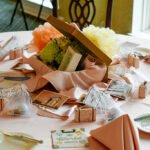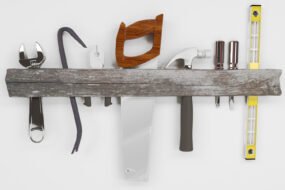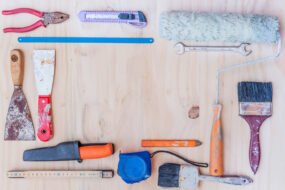
Whether you’re tackling a small craft project or undertaking a full home renovation, having the right tools and materials is essential for a successful DIY experience. Not only does having the proper equipment help you work more efficiently, but it also ensures your projects turn out professionally finished. But with so many tools and materials available, it can be overwhelming to know where to start.
In this comprehensive guide, we’ll break down the tools and materials you’ll need for a variety of DIY projects, from simple home repairs and crafts to larger construction and woodworking tasks. We’ll categorize them based on project type, discuss the best quality options, and offer tips for choosing the right tools for your skill level.
By the end of this article, you’ll feel confident in your ability to pick out the right tools and materials, and you’ll be well-equipped to start any project with ease.
1. Basic Tools Every DIYer Should Own
Whether you’re a seasoned DIY enthusiast or just starting, there are a few essential tools that every DIYer needs in their toolbox. These tools will be used for a wide range of tasks, from assembling furniture and fixing leaks to hanging shelves and painting your walls.
Hammer
A hammer is a must-have for most DIY projects. It’s essential for driving nails, breaking apart materials, and even prying things loose. You can choose from different types of hammers depending on your needs, such as a claw hammer for general use or a rubber mallet for more delicate tasks.
Tip: Look for a hammer with a comfortable grip and a well-balanced head to avoid fatigue during long tasks.
Screwdrivers
A good set of screwdrivers is crucial for assembling furniture, tightening screws, or working on electrical projects. A combination of flat-head and Phillips-head screwdrivers should cover most needs. You may also want to invest in a cordless screwdriver or drill for larger tasks.
Tip: Opt for a screwdriver set that includes multiple sizes and types to handle different screw heads. A multi-tool screwdriver can save space and time.
Measuring Tape
Accurate measurements are essential when building furniture, hanging pictures, or installing shelves. A retractable measuring tape is compact and easy to use for measuring walls, furniture, and materials.
Tip: Invest in a measuring tape with both metric and imperial units for maximum versatility, especially if you work with international plans or designs.
Utility Knife
A utility knife is one of the most versatile tools in your kit. It’s used for cutting through cardboard, plastic, wood, and even drywall. The retractable blade ensures safety and ease of use.
Tip: Keep extra blades on hand, as utility knife blades can dull quickly with heavy use.
Pliers
Pliers are used for gripping, bending, and cutting wires, nails, or other small objects. A basic set should include needle-nose pliers for precision work and slip-joint pliers for gripping larger materials.
Tip: Invest in pliers with insulated handles if you plan on working with electrical projects.
2. Power Tools for Larger Projects
When you’re ready to take on more complex projects, power tools are essential for saving time and improving accuracy. While these tools can be an investment, they’ll provide better results and make tough tasks more manageable.
Cordless Drill/Driver
A cordless drill is one of the most versatile power tools you can own. It’s useful for drilling holes in wood, metal, or plastic, and for driving screws. If you only need to drill into drywall or wood, a basic drill with different drill bits should suffice. However, if you’re planning to do more heavy-duty tasks, consider a drill/driver with multiple speed settings.
Tip: Look for a drill that’s comfortable to hold, has an adjustable clutch for variable torque settings, and includes a set of drill bits and driver bits.
Circular Saw
For larger DIY projects, such as building furniture or cutting lumber, a circular saw is an indispensable tool. It allows you to cut straight lines quickly and accurately, making it easier to cut through plywood, MDF, and even hardwood.
Tip: Choose a saw with adjustable depth and bevel settings to ensure versatility when making different types of cuts.
Jigsaw
A jigsaw is ideal for cutting curves, angles, and intricate shapes in wood, metal, or plastic. This power tool allows you to make curved or irregular cuts that a circular saw can’t handle.
Tip: When using a jigsaw, choose the appropriate blade for the material you’re cutting to achieve cleaner and more precise cuts.
Orbital Sander
An orbital sander is perfect for smoothing rough wood surfaces, removing paint, or polishing your projects. This tool helps you achieve a smooth, even finish with minimal effort.
Tip: Opt for a sander with adjustable speed settings to control the intensity of sanding depending on the material.
Sawzall (Reciprocating Saw)
For demolition or cutting through thick materials like metal pipes, PVC, or drywall, a reciprocating saw (also known as a Sawzall) is invaluable. Its back-and-forth motion is powerful enough to cut through a wide variety of materials quickly.
Tip: Use a reciprocating saw with adjustable speed settings to control the power and ensure clean cuts.
3. Materials for Your DIY Projects
Once you’ve gathered the necessary tools, the next step is collecting the right materials for your projects. Different projects require different materials, and knowing which to use will ensure that you achieve the best results.
Wood
Wood is a versatile material used in countless DIY projects, from building furniture to creating home decor. There are many types of wood available, including softwoods like pine and hardwoods like oak.
Tip: For beginners, softwoods like pine are easier to work with and are generally more affordable. If you’re building furniture or want something durable, consider hardwoods like oak, maple, or walnut.
Paint and Stain
When it comes to finishing wood projects, paint and stain are essential for giving your pieces a polished look. Paint provides full coverage and color, while stain enhances the natural wood grain.
Tip: For the best results, use a primer before painting and always apply multiple thin coats. Choose stain based on the type of wood you’re working with to achieve the desired finish.
Drywall
Drywall is commonly used for home improvements, whether you’re patching holes or creating new walls. It comes in various thicknesses and sizes, depending on the intended use.
Tip: For small projects, pre-cut drywall panels are available. If you need to cut drywall yourself, use a utility knife and a drywall square for straight cuts.
Adhesives
In addition to nails and screws, adhesives are often used in DIY projects to bond materials together. Different adhesives work for different tasks. Wood glue, super glue, and construction adhesives each serve a specific purpose.
Tip: For wood projects, use wood glue as it bonds strongly and dries clear. For more heavy-duty tasks like bonding tiles or concrete, opt for construction adhesive.
Hardware
Hardware refers to items like screws, nails, brackets, hinges, and hooks, which are essential for holding materials together. Choosing the right size and type of hardware will make your project sturdier and more professional.
Tip: Always match the hardware to the material you’re working with. For example, use drywall screws for hanging items on walls and wood screws for assembling wooden furniture.
4. Safety Gear and Accessories
Before you begin any DIY project, it’s crucial to prioritize safety. Wearing the right protective gear will help prevent accidents and injuries while you work.
Safety Glasses
Protecting your eyes should be your first priority when working with power tools, cutting materials, or sanding. Safety glasses prevent debris and dust from getting into your eyes.
Tip: Look for safety glasses with a comfortable fit and adjustable head straps to prevent them from slipping during use.
Hearing Protection
Many power tools generate loud noise, which can be harmful to your hearing over time. Earplugs or earmuffs help to protect your hearing while working.
Tip: Choose earmuffs with noise reduction ratings (NRR) for maximum protection, especially when using tools like saws or drills.
Work Gloves
Work gloves protect your hands from cuts, splinters, and abrasions while handling rough materials. They also improve your grip on tools.
Tip: Choose gloves that are snug-fitting but not too tight, and ensure they provide adequate dexterity for tasks like using small tools or handling screws.
Dust Mask or Respirator
When sanding, painting, or working with materials that release dust or fumes, a dust mask or respirator is essential. This protects your lungs from harmful particles.
Tip: For larger projects that involve heavy dust or fumes, consider investing in a full-face respirator with replaceable filters.
5. Organizing Your Tools and Materials
A well-organized workspace can make your DIY projects run more smoothly. Keeping your tools and materials neatly stored helps you avoid wasting time looking for items and keeps your workspace safe.
Toolbox or Tool Chest
Having a dedicated toolbox or tool chest is key to keeping your hand tools organized. Toolboxes come in various sizes, from portable models to large chests with multiple drawers for organizing small tools.
Tip: Invest in a toolbox with compartments for screws, nails, and small accessories. This will help keep everything organized and prevent clutter.
Storage Bins for Materials
Store your materials, such as screws, nails, and paint, in clear plastic bins or labeled containers. This ensures that everything is easy to find and prevents it from getting damaged or mixed up.
Tip: Use stackable bins to save space and keep materials organized by category (e.g., screws, adhesives, or paint supplies).
Conclusion
Equipped with the right tools and materials, you can confidently tackle a wide range of DIY projects, from simple home repairs to more advanced woodworking and crafting tasks. Having a solid toolkit will allow you to work more efficiently, make fewer mistakes, and produce professional-looking results.
Remember that quality tools can be an investment, but they pay off in the long run with improved performance and durability. Start with the basics, and as you gain experience, expand your toolkit to suit your needs. Above all, safety should be your priority—always wear the proper protective gear and work in a well-organized space.
So, gather your materials, get your tools ready, and let your creativity flow. Whether you’re fixing up your home, creating beautiful decor, or building furniture, you’ll be well on your way to becoming a DIY pro!








